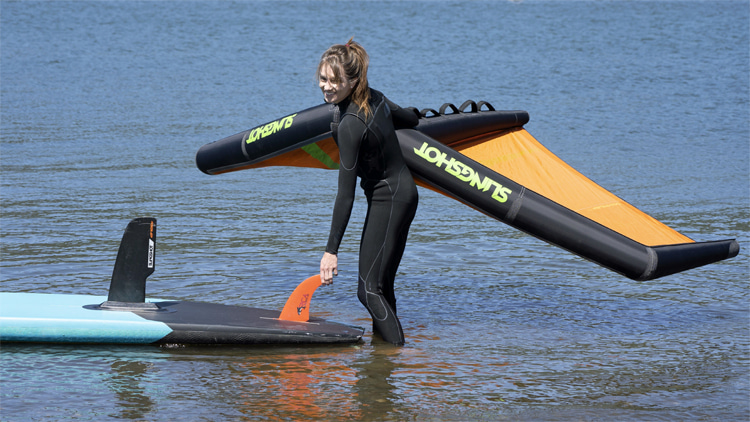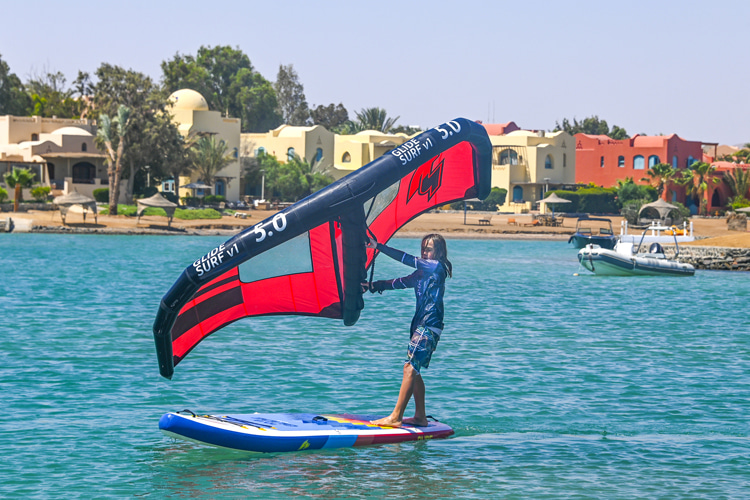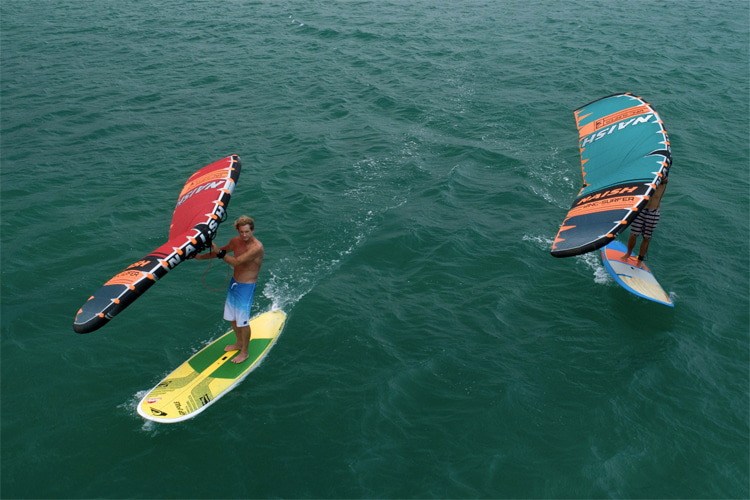Handheld inflatable sails unveiled new opportunities for wave and wind sports enthusiasts and are becoming increasingly popular.
Water-based activities like surfing, stand-up paddleboarding (SUP), windsurfing, and kiteboarding no longer co-exist in separate blocks.
The (re) introduction of wings - a type of inflatable portable sail - in the market allowed surfers to reach and ride swells in the open ocean and, people who had never sailed before, quickly enjoy the fun of riding with the wind.
And if you own a SUP, you can also try to explore the potential of sailing. All you need is a wing foiling wing.
Although they are more commonly seen in foil-equipped boards, you can also use these light, maneuverable sails in SUP boards or even longboards.
The combination of these versatile equipment items is an exhilarating experience known as wing SUPing.
If you're someone curious about trying this unlikely partnership, go through our comprehensive wing SUP step-by-step guide.
You cannot imagine how much fun you'll have.

1. Understanding Wing SUP
Before attempting wing SUP, it's crucial first to be comfortable paddling a SUP while standing.
Remember that you will be holding the inflatable wing at moderate speed, so you've got to get your balance right.
Try it for a while, first without the sail and then with the sail. Consider it the foundation upon which your experience is built.
The SUP should ideally have one or more fins or even a daggerboard. Without it, you'd simply be blown straight downwind.
Choosing Your Gear
You don't need much to start wing SUPing.
The handheld sail is definitely the most important item, as you can use almost any paddleboard or very long longboard.
Here's what you should know:
- Wing Size: Larger wings can feel cumbersome for beginners, so starting with a smaller wing is recommended. A 4-meter wing in approximately 15 knots of wind should serve you well;
- Safety Gear: The importance of leashes cannot be overstated. Both the wing and board should have one. These keep them from drifting too far in case you fall off;
2. Beginning with Basics: Paddling SUP
Before you even think about introducing the wing, you must first hone your paddling skills.
One technique involves paddling the SUP in a similar way to a surfboard.
A crucial tip during this exercise is to turn the wing upside down and anchor your feet on its leading edge.
This will be your emergency mode in case the wind dies down, or the wing suffers a malfunction.

3. Integrating the Wing
Starting Out
It's better to start on your knees. This provides a lower center of gravity, making balancing easier.
When you're ready, do the following:
- Push up from a prone position onto your knees;
- If your wing is facing the wrong way, use the leash to pull it in and flip it;
- Grasp the power handles and ensure the wing is in a neutral position, preventing the wingtips from touching the water;
- With the wing flying above you, use its leverage, combined with body twists, to steer the SUP. Want to go upwind? Lean back. To go downwind, lean forward;
Standing Up
The transition from kneeling to standing is an important move and moment.
Move your rear knee towards the board's center for stability. Bring your front leg through, placing it near the board's middle.
As you stand, ensure both feet are near the board's center line for optimal balance.
4. Navigating & Turning
Turning is arguably the trickiest aspect of wing SUPing. Here's how:
- Into the Wind (Tack): Lean back, pulling the wing towards the board's rear. Use the wing's power to help twist your body into the wind;
- Downwind (Jibe): Move forward, pushing the wing towards the board's front. Leverage the wing to help twist your body;
For novices, turning might be easier when kneeling.
Remember: use the wing to your advantage, not as a challenge. You should be holding it effortlessly.
5. Essential Tips
Let's recap some of the critical takeaways of your first wing SUPing lesson:
- Use the wing for balance; it's your ally;
- Ensure the wind hits the leading edge of the wing first;
- Your rear hand is your rudder; use it to adjust power and steer;
- Maintain a relaxed grip on the handles to prevent forearm fatigue;
- Your body's direction should mirror where you want to go;
